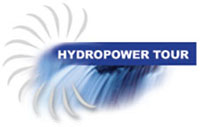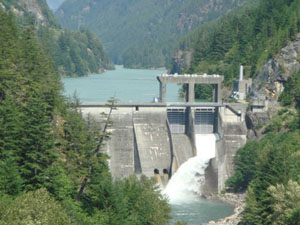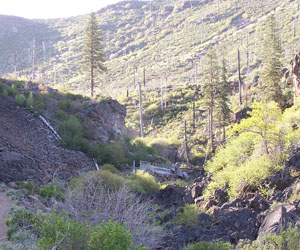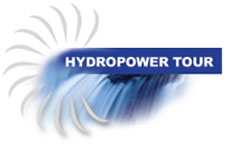

"Reservoir hydropower systems are easily distinguished by a large dam and lake behind it."
"Streaming hydropower systems do not use a dam, and are usually smaller and more difficult to spot."
Hydropower Tour, Part 2:
Types of Hydropower
Two Major Design Approaches: A Big Lake - or Not?
Low Cost, Green Energy

In the previous section, How Hydropower Works, we learned about the natural energy available in moving water, and how we can extract some of it as hydropower. The concepts are simple and the technology is proven; clean hydropower is one of the least expensive ways to generate electricity. Not surprisingly, regions able to support hydroelectric systems tend to enjoy lower electricity rates than those that rely primarily on coal and other fossil fuels.
Now we turn to the two major methods we use today to generate electricity from this remarkable source of renewable energy.
The Two Major Designs for Hydropower
Most hydroelectric systems can be classified into one of two groups:

Reservoir Hydro Systems
Most people visualize a Reservoir system when they hear the term “hydroelectric project.” Reservoir systems can easily be recognized by the large dam that creates a sizeable lake behind it. Examples include Hoover Dam (and Lake Mead) in Nevada, Grand Coulee Dam (and Lake Roosevelt) in Washington, and the massive Three Gorges Dam in China.
Located in Washington State, this Reservoir Hydro project provides electricity to the city of Seattle.

Close-up photo of diversion
Streaming (Run of River) Systems
In many respects, Streaming Hydro (also known as Run of River) systems are the opposite of Reservoir systems. There are no dams and lakes, only diversion systems that direct a portion of a stream or river through the hydroelectric turbine. Streaming systems are typically installed on smaller streams and rivers, and generate less power than large Reservoir systems. They are rapidly gaining popularity due to their ease of installation and small ecological footprint.
In contrast, a Streaming Hydropower system has no dam or lake. This diversion (center of picture) supplies water to a one-megawatt hydroelectric plant in California.
Contrasting Reservoir and Streaming Hydro
Both Reservoir and Streaming Hydro systems use moving water to produce electricity. The two types of hydro systems are designed much differently, however, and each approach has its own advantages and disadvantages. In our next segment of the Hydropower Tour, we’ll examine each approach in more detail and contrast the differences.

Continue to Reservoir Hydroelectric Systems
